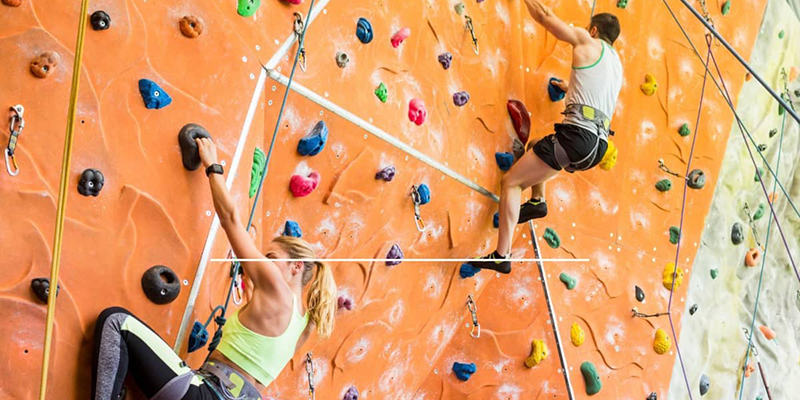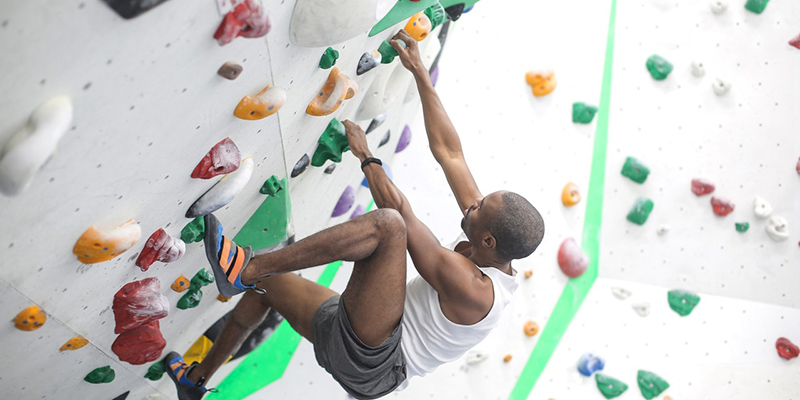Rock climbing is an endeavour like no other. For most people, it is a journey that starts with contemplation and ends as a personal history story with an essence of thrill, challenge, and a sense of achievement. As with all other ventures, rock climbing comes with its feats and risks, which, when managed adequately, can ensure a seamless experience. In this article, we will delve into these feats alongside the intricacies of rock climbing that beginners often face.
The Basics Of Rock Climbing
With rock climbing gaining prominence, many recent studies have shown that it is one of the safest sports for an individual to pursue, especially with all the provisions available today. Considering the uncontrolled variables in physical activities and how they can go wrong, climbing, like other activities, also has risks, but the best part is that they can be managed. This article takes a holistic approach for every new climber to ensure you are well-informed about safer climbing decisions.

Outdoor rock climbing can come later. Start by Getting familiar with indoor gyms, which focus on teaching the basics of rock climbing correctly. Usually, gyms have structures that ensure novice climbers do not put themselves in highly challenging situations. At the same time, they get accustomed to climbing—all this while practising various techniques without worrying about tumbling off the mountains.
Stepping into a climbing gym for the first time is likely confusing because of all the terminology. Even the best climbers used to feel the same way. Here's a quick breakdown:
Bouldering: Climbing short routes without the use of ropes.
Top-Roping: Climbing using a rope fixed to an anchor above the climber.
Lead Climbing: Climbing with the rope already attached to the climber and clipping in at various points.
Everyone has their safety precautions and methods of strategies, so please be sure to ask any member of staff for assistance.
Gear Up For Success
One of the most important aspects of climbing safely is having the right equipment. While indoor gyms often rent out gear, knowing what each item does will help you use them correctly.
Climbing Harness
Your harness is your lifeline. Make sure it fits snugly but comfortably around your waist and legs. Adjust the straps according to your size before starting your climb.
Rope And Carabiners
Understanding how to tie knots and secure carabiners is crucial for top-roping and lead climbing. Never rely on a single anchor point at the end of a pitch—always use at least two carabiners for added security.
Belay Device
If you're not bouldering, you'll need a belay device. This tool helps control the rope and catch falls. Always double-check that your belay is locked before letting go of the rope.
Climbing Shoes
Invest in a pair of climbing shoes that fit well. They should grip the wall effectively but still allow for comfort during long sessions.
Chalk
Keep your hands dry with chalk. Sweaty palms can lead to slips, so keep a chalk bag handy.
Remember, misusing gear can put you and your climbing partner at risk. Take time to familiarize yourself with each piece of equipment before heading up.
Learning Proper Techniques
Now that you’ve got the gear down, let’s talk technique. Good form isn’t just about reaching the top faster—it’s also about minimizing injury.
Footwork Over Hand Strength
Many beginners focus solely on pulling themselves up with their arms. Big mistake! Your legs are much stronger than your arms, so shift your weight onto your feet whenever possible. Use your toes to find footholds and maintain balance.
Trust Your Spotter During Bouldering
If you're trying bouldering, always climb under the supervision of someone who knows how to spot correctly. A good spotter doesn't catch you mid-fall but guides you toward landing safely on crash pads below.
Practice Falling Safely
Falling is inevitable, especially as you progress to more challenging routes. Instead of fearing it, learn how to fall safely. Keep your knees bent upon impact and try to land on your back or side rather than directly on your head or tailbone.
Staying Safe Indoors Vs. Outdoors
While indoor climbing offers a safer environment, transitioning to outdoor climbing requires extra caution. Let’s break it down:
Indoor Climbing
Indoor gyms are designed to minimize hazards. Walls are built specifically for climbing, and mats cushion potential falls. Still, remember these tips:

Follow Gym Rules Strictly. No Shortcuts!
Communicate clearly with your belaying partner. Use standard commands like “On belay?” and “Climbing!”
Be aware of others around you. Gyms can get crowded, and accidental collisions happen more often than you think.
Outdoor Climbing
Once you're ready to take your skills outside, prepare for a new level of challenge. Natural terrain introduces variables like loose rocks, weather changes, and uneven surfaces. To stay safe:
Inspect your route beforehand. Look for signs of unstable rocks or dangerous obstacles.
Check weather forecasts regularly. Sudden storms can turn a fun day into a nightmare.
Bring additional safety gear, such as helmets, for protection against falling debris.
Common Mistakes To Avoid
Even experienced climbers sometimes slip up, but avoiding common errors can save you from serious trouble. Here are some pitfalls to watch out for:
Not Double-Checking Equipment
Always inspect your harness, ropes, and carabiners before starting. A minor defect could lead to big problems.
Ignoring Warning Signs
Listen to your body. If something feels off, stop immediately. Pushing through pain or fatigue increases the likelihood of injury.
Overestimating Your Abilities
It's tempting to tackle more challenging routes after mastering easier ones, but progressing too quickly can leave you unprepared for unexpected challenges.
Neglecting Warm-Ups
Just like any workout, warming up prevents strains and tears. Before climbing, stretch your fingers, wrists, and shoulders for five minutes.
Mental Preparation Is Key
Rock climbing isn't just a physical endeavour—it's mental too. Fear of heights, self-doubt, and overconfidence can all affect your performance. Developing a strong mindset takes practice, but here's how you can start:
Visualize success. Imagine yourself completing the route step by step.
Stay present. Focus on the task at hand instead of worrying about what happens next.
Celebrate small victories. Every successful climb builds confidence.
Have Fun, Stay Safe
Rock climbing is an incredible way to push your limits and connect with nature. As exhilarating as it is, remember that safety should always come first. You'll enjoy countless hours of climbing adventures by arming yourself with knowledge, practising proper techniques, and respecting the environment.
So lace up those climbing shoes, grab some chalk, and hit the wall—but do it wisely. After all, the best climbers aren’t the ones who reach the top fastest—they’re the ones who make it back down safely every time.
And hey, if you ever doubt yourself, remind yourself of this golden rule: When in doubt, check again. Because when it comes to climbing, there's no such thing as being too careful.


